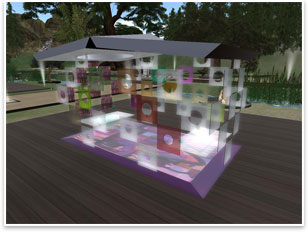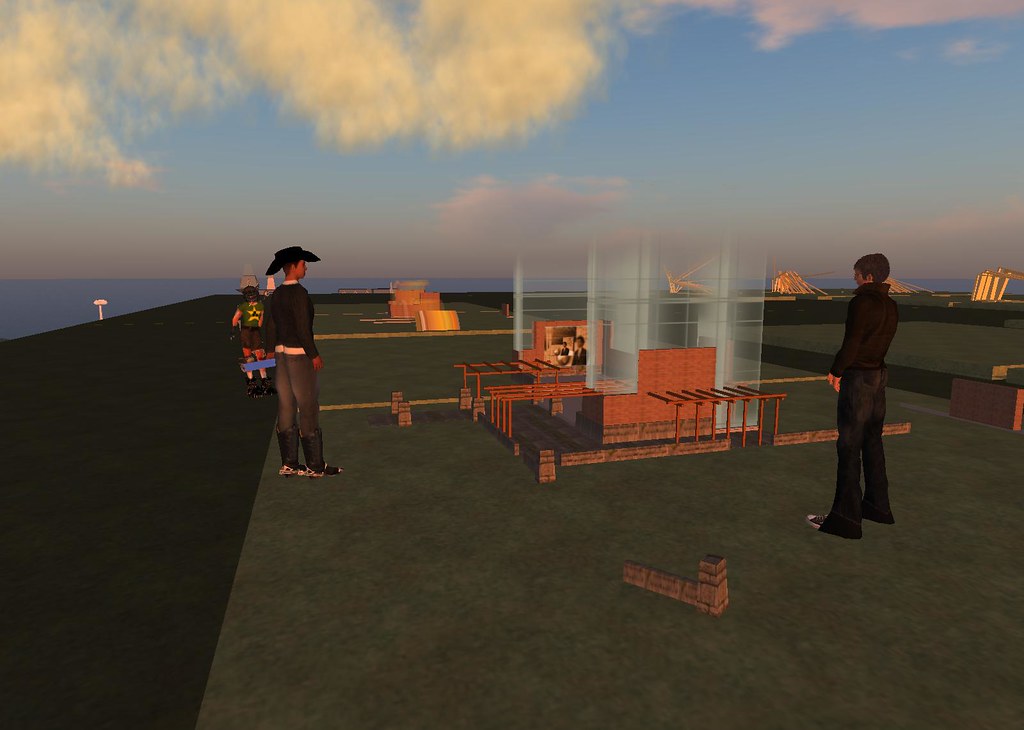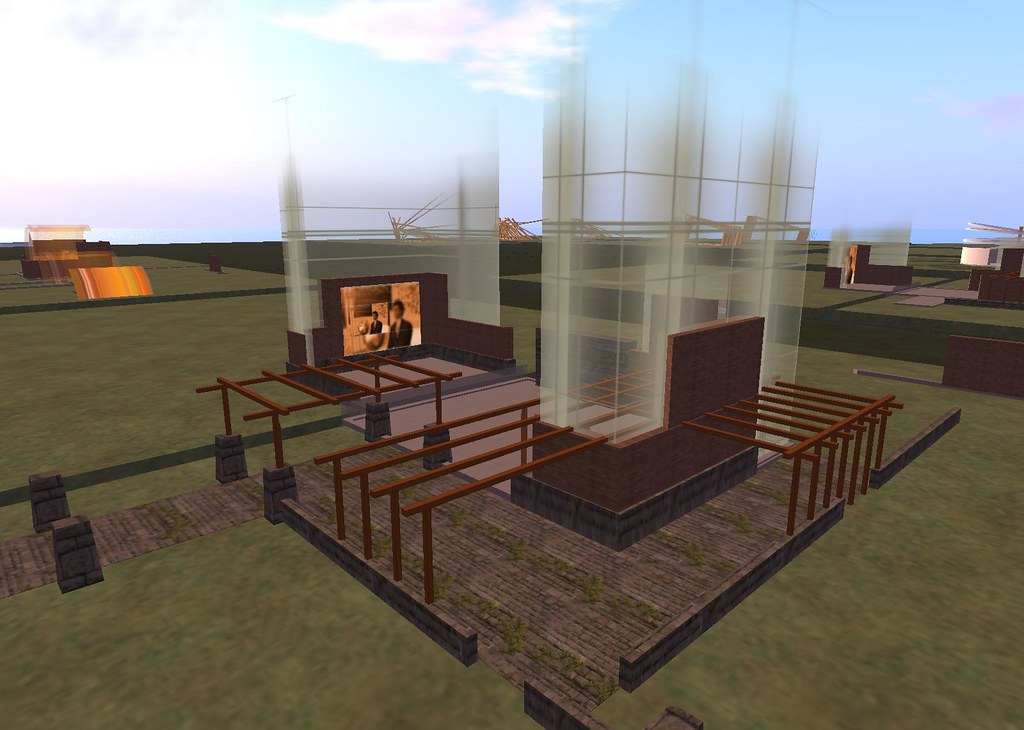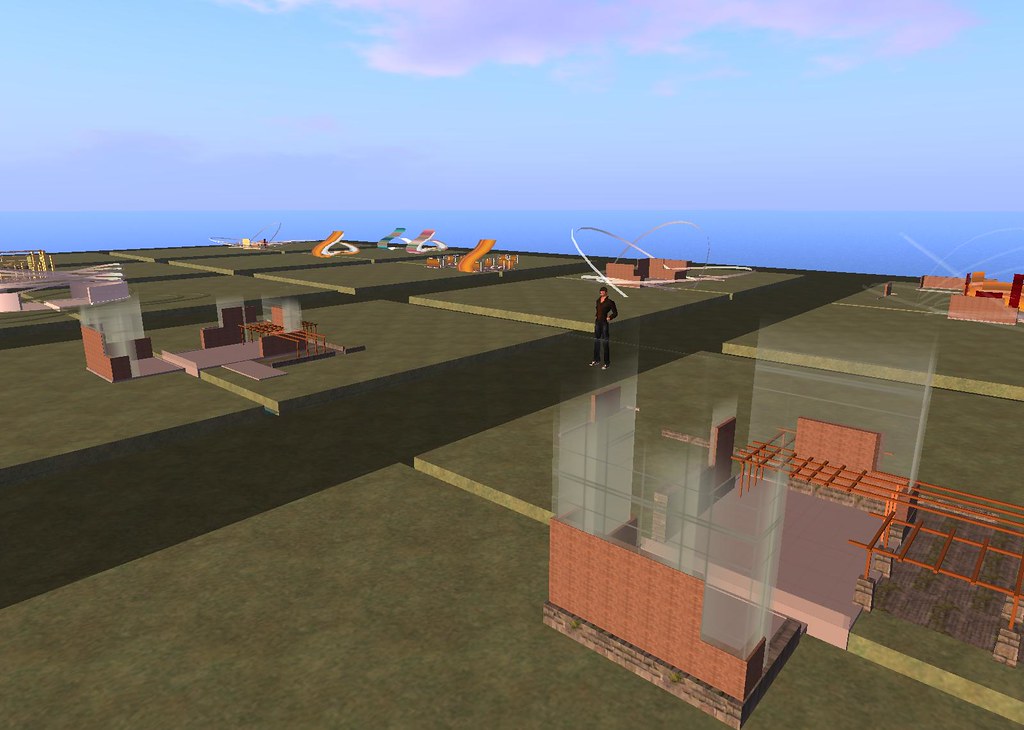
The American Institute of Architects is calling Second Life a “game changing reinterpretation of design”:
“The online interactive software program Second Life has become an emerging place of architecture research that ranges from a practice tool to an open-ended exploration of design context and expression. Especially in architecture schools, its immersive 3D environments allow users to conceptualize and design a space quickly, thus opening it up for investigation by other users, which allows designers to see how it will be used and how people will circulate through it.”

In a wide-ranging review of architectural practices, the journal effuses:
“Second Life’s design flexibility has made it a new frontier for design research and exploration, creating ways to connect people across the globe and helping architects see the world in new ways. Designing in Second Life asks for a new balance of freedom from real-life constraints and continued age-old practices of building.”
For many of us, there are moments of ‘conversion’ – those things, or places, or people that converted us from casual explorers or vaguely interested into evangelists.
This stuff is hard to describe: what it means that a virtual world, with a sense of place, also allows its users to create their own content. First, you need to get past the avatar: people react differently to the idea of being represented by a pixelated version of – well, not of themselves really, but a proxy. But second, describing the value that comes from a world in which user-generated content is the under-pinning of both the economy and the experiences is a another leap.
For myself, it was Svarga. And rezzing my first prim. And it was stumbling across Keystone’s work on “green architecture” which led me, eventually, to reflexive architecture and Wikitecture. Those were the break-through moments: understanding the power of storytelling, the ‘real’ applications, and importantly the opportunities for collaboration.
Collaborating in Virtual Worlds
The article interviews Terry Beaubois of Montana State, who comments on the collaborative potential:
“Beaubois anticipates a future when software like Second Life becomes a place where all design and construction professions can collaborate openly and transparently. “Those are the kinds of things I think this technology can support—really good design decisions with the true collaboration that all architecture has,” Beaubois says.
Beaubois regards his work with Second Life as open ended research done in the stead of architects too busy to radically re-evaluate how they design. “I can afford to fail,” he says. “I can try something that doesn’t work.”
But is what goes on in Second Life really architecture? Beaubois isn’t sure that it is. As fascinating as questioning the line between simulation and actuality is, everyone knows where the restraints and consequences of reality really begin. “It’s kind of like saying that modifying your avatar is doing plastic surgery,” he says.”
All of which leads me to Metanomics: we recently added a second region, as Roland so elegantly reported. And I’m thrilled to be working again with Keystone Bouchard on designs. But what’s even more amazing is to watch the process unfold: Keystone was keen to “build in public”, to invite comment, to solicit community feedback.
You can view Keystone’s work in progress. The current platform with his models can be accessed here.
This process of collaboration, community, and design is one of the reasons we stay.



Other photos here.

